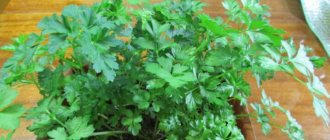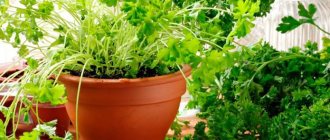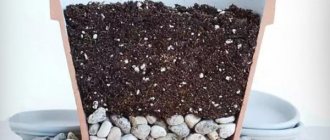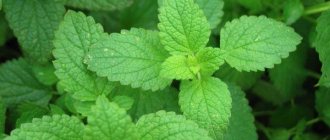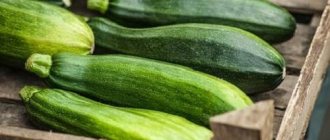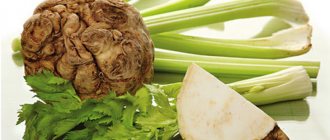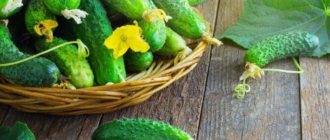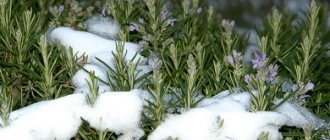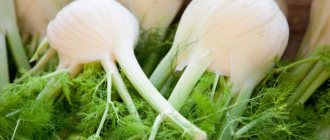It is common to see fresh spinach greens in garden beds from spring to autumn. But I want to get vitamins all year round. Therefore, many gardeners continue to do whatever they want in the winter - growing spinach at home on the windowsill. The rules for planting and care are quite simple, so even a novice gardener without experience in home gardening can cope with this task.
Which varieties to choose?
Varietal characteristics determine the early maturity and quantity of the future harvest, so the choice of variety must be approached with all responsibility. Experienced gardeners recommend taking a closer look at early-ripening varieties that produce a harvest on average 30 days after sowing, have a good rosette and large, fleshy leaves.
Based on these criteria, it is best to grow the following varieties at home:
- Victoria . Refers to a very early and early ripening leaf crop - after emergence, the harvest can be harvested in 25-30 days. The variety is characterized by round leaves (8-10 cm long), which are collected in a small rosette and pressed tightly to the ground. The petiole of "Victoria" is thick and short (length - 3.4-4.7 cm), and the weight of one plant is 25-28 g.
- Matador . It is a high-yielding hybrid that has oval leaves of dark green color (length - 18-22 cm) and a slightly raised rosette. After sowing the seeds, the plant will mature within 35-50 days. "Matador" is not afraid of frost and other unfavorable conditions, so it is often chosen for growing on balconies.
- Gigantic . The variety has a delicate taste, so the foliage of the plant is often used in preparing various dishes for children. The harvest can be harvested 21-23 days after the first shoots appear. The foliage of a delicate light green shade is of medium size (length - about 20 cm) and forms a dense rosette, which is slightly raised.
- Fat-leaved . This early-ripening variety ripens within 30-35 days after the appearance of the first shoots. The green foliage of the plant has a fleshy structure, oval shape, textured cover and medium length (18-20 cm). Numerous leaf plates form rosettes with a volume of 25-30 cm.
Each variety has its own characteristics. If it is difficult to make a choice, you can sow several packages of seeds of different varieties in separate containers. Once they are ripe, you can compare them and choose the best type of spinach for you.
It should be noted that the plant also comes in two types - ordinary and New Zealand. You can grow both spinach at home, but the second type will not quickly shoot out and will produce more abundant green mass, which can be harvested within 2-3 months.
Brief description of the culture
Spinach, as a garden plant, appeared in Ancient Persia.
It also received a positive assessment in the Arab world, but Europe and Russia did not immediately appreciate the plant. Spinach is an annual crop of the goosefoot family. Its ripening lasts no more than a month. During the flowering period, green flowers are formed, from which round small fruits ripen after 90 days.
Young spinach leaves are eaten. They are dark green in color, rounded at the top. The smoothness and roughness of the leaf plate, as well as the saturation of the shade, depend on the variety of garden crop.
Spinach contains many vitamins and minerals and is rich in fiber. The amount of water in the leaves of the plant is up to 90%. During heat treatment, the quality of the composition deteriorates significantly. Therefore, it is recommended to eat it raw in salads, smoothies and other dishes.
What are the benefits of growing spinach in containers?
- Container mobility - it can be easily moved. Containers with plants can be placed on a windowsill or on a balcony, or taken outside in warm seasons;
- Growing spinach on a windowsill in a pot also makes it impossible for nematodes and other soil pests and diseases to breed;
- Containers for growing plants are readily available in retail chains;
- It only takes 40-45 days to reach harvest time;
- This vegetable can be grown all year round, but the best period for planting spinach in a container is early spring and autumn-winter, which is important when there is an acute shortage of vitamins;
All of the above benefits also apply to other garden plants, such as lettuce, onions, radishes and other vegetables.
Recommended types and varieties of spinach
The variety of spinach is divided into the following groups:
- Leaf spinach. Characterized by a green, round leaf blade. Red-brown veins may be present.
- Strawberry spinach. It differs from other varieties in that its berries, reminiscent of strawberries, are eaten. They taste like a nut-strawberry mixture. The leaves of this type of crop are small with sweet notes. They are suitable for consumption only in small doses due to the presence of toxins.
- Water spinach. A plant from the Bindweed family. The shape resembles a green onion: the leaves in a rosette have a narrow, elongated shape. Both leaves and stems are eaten. Grows in waterlogged soils, near rivers and lakes.
All varieties of spinach are divided into three types:
- early ripeness;
- medium ripeness;
- late ripeness.
When choosing seeds, be sure to take this characteristic into account and select according to your climate. Here are examples for each varietal group:
- Virofle. Suitable for planting by seed in early spring. General continuous germination appears within a month. In a lush rosette, the leaves are bright green, not large, and the stems are rigid.
- Gigantic. Shoots appear 2 weeks after sowing the seeds. The quality of the greens is excellent. In warm climates, this variety can be sown 2-3 times per season.
- Uteusha. This hybrid is characterized by frost resistance and early emergence. Spinach can be sown at the end of winter. Suitable for adding to animal and bird feed to replenish the vitamin and mineral composition in the body.
- Bloomsdelsky. Dutch variety of medium ripeness. A dense rosette consists of elongated leaves. It is afraid of cold weather, so sowing is best done in late April-early May.
- Sturdy. Mid-season frost-resistant variety. Gives a good harvest in the northern regions. Complete leaves, suitable for consumption and for preparation for storage, are obtained on the 26th-27th day.
- Fat-leaved. Late ripening variety. The rosette leaves are not particularly dense, but each of them is dense and juicy. Recommended for salad bases.
- Victoria. Late ripening spinach. Prefers warmth and high humidity. It is recommended to sow in early summer. Characterized by resistance to pest attacks and bolting.
New Zealand spinach
It represents not a variety, but a separate variety of this crop. The branched stems of this annual plant, creeping along the ground, can reach a meter in height, and the fleshy, thick leaves, colored dark green, have a triangular shape and jagged edges. Their taste is identical to most varieties of this plant.
This crop needs a lot of sunlight, moisture and heat, so it produces the highest yields when grown in the southern regions of Russia (the first shoots appear 2-3 weeks after sowing the seeds). In the climatic conditions of the middle zone, it is advisable to grow New Zealand spinach through seedlings.
The first cutting of leaves is carried out after 25-35 days; during the season, green harvests are harvested many times.
Variety "Victoria" (German selection)
Having a long (up to 40 days) growing season, it is late-ripening. The timing of planting seeds is from March to mid-May. An adult plant produces small (up to 15 cm in diameter) rosettes pressed to the soil.
The leaves, growing horizontally, have a rounded shape, smooth edges and a dark green color. The great advantage of the variety is its good resistance to powdery mildew and bolting. Victoria spinach grows well in soils that can retain moisture and have normal acidity.
Caring for it consists of thinning, weeding and regular watering. If everything is done correctly, each square meter of planting will produce up to 3.4 kg of useful greenery.
Spinach "Matador" (Czech selection)
Belongs to the category of mid-season varieties, capable of producing the first greens within three weeks after sowing the seeds. Its compact rosettes consist of thick, smooth leaves that are oval in shape and gray-green in color. "Matador" is frost-resistant, not prone to bolting and has high requirements for soil moisture.
All these qualities make this variety of spinach suitable for sowing in autumn and early spring. Productivity – up to 3 kg per square meter. meters.
"Stoic"
An early ripening variety, the growing season of which is no more than 3 weeks. It produces the highest yield (up to 3 kg per m2) in the temperate climatic conditions of central Russia. The rosette consists of leaflets raised above the ground, 19 cm long and 12-14 cm wide. Greens are added to salads and used in canning vegetables.
Variety "Virofle" (French selection)
It has a growing season of up to 25 days. Its large (up to 35 cm in diameter) rosettes contain a large number of fleshy and very tender oval-shaped leaves. A feature of the variety is the rapid appearance of stems and seeds. The plant tolerates cold and nighttime drops in temperature well, so it can be planted in early spring.
Variety "Godri"
The growing season, which ranges from 18 to 30 days, is classified as early ripening. The first leaves can be collected in 2-3 weeks. Spinach of this variety, characterized by high frost resistance, is intended for growing in open ground. Sowing of seeds is carried out either in early spring or at the very end of summer. The diameter of the leaf rosettes is 25 cm.
Fat-leaved
An early ripening variety, ready for cutting after 28 - 30 days. The leaves are slightly bubbly, juicy, tender.
This is interesting: Cacti for beginners: transplanting, watering, soil and pots
Sturdy
Reaches market maturity in 30 days. The variety is characterized by a high content of protein, vitamins and microelements. The rosette is large, weighing up to 90 g.
Gigantic
From germination to harvest, 20–25 days pass. Slightly bubbly large leaves are light green in color, very juicy and tender.
Marquise
An early ripening variety, the first harvest is harvested after 20 - 25 days. It is famous for its long fruiting period. The leaves are numerous, slightly wavy.
Growing conditions
In order for spinach to grow at home, it is necessary to provide favorable conditions for this - from lighting to air humidity. Each parameter is important, so they should be considered separately.
Temperature
Spinach does not require high temperatures for normal development. Seeds can germinate at a temperature of +4˚С, but in the future for the growth and development of the plant a temperature of +14…+18˚С will be required. The ideal temperature is +15˚С, since in such conditions the plant quickly gains strength and grows to its optimal size. The leaves do not fade or wither.
It should be noted that the shrub can develop at temperatures of +7...+10˚С, but in this case the growth of leaf blades will be somewhat slowed down. The air temperature should also not be allowed to exceed +18˚С, since in this case the plant will bolt, so its leaves will become unsuitable for consumption.
You can also keep the plant on a glassed-in loggia, since it is easy to maintain the optimal temperature in such a room.
Air humidity
Spinach is a moisture-loving crop, so it is important not only to carry out regular watering and spraying, but also to maintain high air humidity - about 50-60%. Otherwise, the plant will begin to wither and will not be able to produce a full harvest. So, in hot weather or during the heating season, it is recommended to regularly spray the crops with a spray bottle or place containers of water around the flowerpots.
Lighting
Spinach is a light-loving plant, so it should be grown on well-lit southern windowsills. As a last resort, flowerpots with plants can be placed on south-eastern or south-western window sills.
In this case, it is worth taking additional measures depending on the time of year:
- in spring and summer, plants should be shaded to prevent severe overheating and burning of delicate leaves;
- in the autumn-winter period, especially during cloudy or rainy weather, it is worth turning on fluorescent lamps in the room to ensure full daylight hours.
It is worth noting that normal development of the shrub at any time of the year requires exposure to light of about 10 hours. For additional illumination, you can use fluorescent lamps, placing them at a distance of 60 cm from the spinach containers and turning them on in the evening for 2-3 hours or more.
Excessive exposure to light is also contraindicated for seedlings, as it can delay the onset of the flowering period.
Necessary equipment
To grow spinach on a windowsill, it must be sown in a spacious container. For these purposes, you can use boxes or containers with a depth of at least 15 cm. Seeds can also be sown in flower pots, but their volume must be at least 1 liter, but not more than 2 liters. In addition, when choosing a container, you should take into account several parameters:
- will they fit on the windowsill;
- are there drain holes for water drainage;
- Is it possible to prepare two layers - drainage (at least 3 cm) and soil (about 12-15 cm);
- will it be possible to maintain the optimal interval for planting seeds (to calculate it, you should divide the container into equal squares and see how many seeds can be sown).
If the container meets the listed requirements, then it can be used for the stated purposes. Additionally, it is worth considering whether the grown seedlings will be picked or not:
- if the crop will be cut without replanting the plant, that is, without diving, you can use a shallow, long and wide pot or flowerpot for sowing seeds, which must have holes for excess water to flow out;
- If the grown seedlings are transplanted into another container, initially for sowing seeds it is worth using small containers, from which it will be convenient to pick seedlings in the future.
Interesting facts about spinach
- Spinach is popular in different countries. Many national cuisines consider it the basis.
- This amazing leafy vegetable has many vitamins, microelements, and antioxidants. It is widely used in dietary nutrition.
- 100 g of fresh spinach contains ¼ of the daily value of iron, 4 times the daily value of vitamin K.
- In French cuisine it is called “stomach broom” - it perfectly cleanses the intestinal tract.
- Spinach is rich in fiber and provides a feeling of fullness.
- Fresh herbs ideally complement meat, fish dishes, and chicken eggs. When frozen, it is used in pasta, rice, soups and even baked goods.
Spinach is a tasty and healthy leaf vegetable. Grow it in your own summer cottage, place it on your windowsill, and you can always have fresh and healthy greens.
Article Rating
Soil selection and preparation
Spinach can be successfully grown only in loose and nutritious soil that has a slightly alkaline or neutral reaction. In this regard, the plant cannot be planted in soil with the addition of peat, since it increases the acidity of the soil, which negatively affects the development of the bush.
So, the plant can be planted in any store-bought soil, with the exception of acidic soil. Of course, you can prepare the soil mixture yourself. Here are the most popular substrate options for growing spinach:
- Combine 1 part vermicompost and 2 parts coconut fibers, which will retain moisture, preventing water from stagnating in the container. This mixture has high nutritional value, moisture content and lightness.
- Mix every 100 cu. cm vermicompost with 1-2 tsp. perlite (vermiculite). This substrate can be prepared if coconut fibers are not available at the gardening store. Perlite or vermiculite will retain moisture and give the soil all the same properties as coconut fibers, however, it will not rot and will last even longer.
- Combine 2 parts of garden soil, 1 part each of humus (cow or deciduous) and sand. Before sowing seeds, such a mixture must be scalded with boiling water or disinfected with a solution, and then scattered on a baking sheet in a layer of up to 5 cm and placed in the oven for 30 minutes at a temperature of 100°C to carry out additional disinfection.
It is recommended to first prick any soil mixture in the oven to disinfect it.
Regardless of the type of substrate used, it is necessary to pour a layer of drainage onto the bottom of the container, and then fill it with soil. The fact is that spinach requires abundant watering, and a drainage layer 2-3 cm high will not allow nutrient moisture to stagnate. Various materials can be used for drainage, including:
- crushed stone;
- expanded clay;
- brick chips;
- ordinary foam, divided into small pieces.
How to plant spinach on a windowsill: features, conditions and step-by-step instructions
Once the required variety has been selected, you should begin sowing work, namely: preparing the container, soil for growing, and soaking the seeds. To do this, planting spinach at home requires a competent approach and performing all stages of growing according to certain rules.
Growing container
The root system of spinach, for example, unlike sorrel, is quite shallow, so the container requires a small depth.
By the way! Many people don't like spinach because it tastes like grass (not sour, like sorrel). Indeed, this is a tasteless plant. But a neutral taste is great, you can make such delicious dressings! For example, Caesar salad with spinach turns out to be very unusual.
Naturally, the pot must have drainage holes to allow excess moisture to drain out.
In addition, a small layer of expanded clay or polystyrene should be placed on the bottom of the planting container as drainage.
What soil to plant in
Spinach will grow well only in neutral soil.
In other words, spinach loves soil with an acidity level of about 6.5-7 pH!
You can purchase ready-made soil for growing vegetables such as cabbage, pumpkin, beans, and peas.
Or cook it yourself. To do this, you should take neutral garden soil and mix it with compost or humus, as well as river sand.
Advice! It is recommended to pre-disinfect any soil, even purchased soil, for example by frying it in the oven, so that all pathogenic organisms and fungi are killed under the influence of high temperatures. And/or spilling a solution of potassium permanganate or phytosporin.
Pre-sowing seed preparation
It is not recommended to plant spinach with dry, unprepared seeds (unless they are coated, i.e., already processed seeds). The seeds have a dense external structure, so they should first be soaked for a day or two in water at room temperature (above 18 degrees).
And then (if desired) hold for another 20-30 minutes in a weak solution of potassium permanganate to disinfect the seedlings from diseases.
Direct landing
Step-by-step instructions for sowing spinach seeds for further cultivation at home:
- Drainage and soil are poured into the planting container.
- Beards 1.5-3 cm deep are made.
- The seeds are sown at a distance of 2-3 centimeters from each other.
- Next you need to fill the rows with soil.
- Moisten it (the soil). For example, you can spray it with a spray bottle.
- To create greenhouse conditions, the container is covered with film or glass.
- The pot is placed in a warm (+18..+20 degrees) and dark place.
- When the shoots appear, the shelter (greenhouse) is removed, and the container itself is moved to a bright place - on the windowsill.
Note! In the next video, the author uses the wrong soil to grow spinach (with the wrong acidity). But in general, everything is shown very well and clearly.
Video: sowing spinach seeds for growing on a windowsill
Seed preparation and planting
Spinach seeds are quite large, and they germinate quickly and amicably, guaranteeing almost 100% germination. To achieve such results, they must be properly processed before sowing, following the following instructions:
- The day before sowing, rinse the planting material, add warm water and leave for 24 hours. This will speed up its germination and also ensure uniform germination of young shoots.
- In the morning, drain the water from the container. If previously the seeds had a dense external structure, then after soaking they become somewhat soaked and swell.
- 2-3 hours before sowing, pour the seeds with a weak solution of potassium permanganate or potassium permanganate to disinfect them from diseases. Soaking duration is 30 minutes.
- Dry the seedlings slightly and use for planting.
Spinach can be sown as seedlings or directly to a permanent place of growth. In any case, before planting, the soil must be slightly moistened and grooves prepared, the depth of which is from 1 to 1.5 cm. The optimal distance between them is 2-3 cm. Throw spinach seeds into the prepared holes, and then fill them with soil.
Before emergence, the container should be covered with film or glass. As a rule, seedlings hatch on days 5-7.
How to sow spinach is clearly demonstrated in the following video:
Sowing
It is not necessary to germinate spinach seeds; they sprout well without any pre-sowing preparation within 2 weeks. To speed up germination, they can be soaked in warm water with the addition of a growth stimulator. For example, you can use the well-known “Epin” or “Zircon”.
Useful information Daria Vorontsova Amateur gardener. He is interested in growing various greens at home. In the absence of special preparations, the seeds are soaked in warm water with the addition of a few drops of aloe juice or honey.
After about 2 days they peck. After this, sowing can begin. Step by step it looks like this:
- A drainage layer 2-3 cm thick is poured onto the bottom of the seed container.
- Soil is laid on top of the drainage.
- Parallel grooves with a depth of about 1.5 cm are made on the soil surface at a distance of 2-3 cm.
- The seeds are evenly distributed along the furrows and covered with soil.
- The earth is watered abundantly with warm water.
- Cover the container with a piece of glass or film.
After sowing is completed, the box is placed in a warm place.
Planting care
Containers with spinach must be placed on the south side, and the room must be provided with proper lighting, temperature conditions and air humidity. After this, the plant must be properly cared for in order to achieve rapid pecking of the first shoots. What constitutes care, we will understand further.
Watering
Immediately after planting, lightly moisten the planted crops. In the future, they need to be watered frequently and abundantly. As mentioned above, spinach is a moisture-loving plant and does not tolerate dry soil.
In addition to regular watering, the greens should be sprayed with water at room temperature from a spray bottle. Thus, the plant will be saturated, and the air humidity around it will increase, which will prevent the premature development of bolting. The fact is that with a reduced level of humidity, the plant very quickly begins to throw out flower stalks, so the greens will become coarse and unsuitable for consumption.
In cold seasons, heating devices should not be installed close to the plant, however, if the room temperature is low, so that the soil does not become soft due to abundant watering, it is enough to only irrigate the leaves with a spray bottle.
Top dressing
If spinach was planted in garden soil, then at the beginning of the growing season it should be fed using liquid fertilizers. For example, ammonia, hydrogen peroxide or the drug Fitosporin can be used as a top dressing.
If the soil mixture was saturated with nutritional supplements before planting the seeds, then there is no need to fertilize. The fact is that excessive application of fertilizers negatively affects the characteristics of leaf plates.
Picking
It is carried out only in the case of spinach seedlings. It is necessary to pick the plant to a permanent place when 2-3 leaves appear. As a rule, this happens 2 weeks after sowing the seeds.
When picking, pots with seedlings must be watered well, carefully remove one plant at a time without damaging the roots, and plant them in a permanent place. Afterwards it is worth carrying out moderate watering again.
Possible diseases
When grown on windowsills, spinach seedlings are protected from various pests that can infect the plant when grown in open ground. However, even at home, the shrub is not protected from such diseases:
- Anthracnose . Brown or grayish-dirty spots appear on the leaves, which can have different sizes.
- Root rot . Most often poses a threat to young plants. The disease manifests itself in the form of spots on the foliage with fungal formations inside.
- Fusarium . The leaf plates stop developing normally, and their color changes - it becomes somewhat darker, and then becomes yellow. Eventually, the plant dies.
When fighting any disease, it is necessary to remove the damaged areas, and if the entire plant is completely sick, unfortunately, you will have to completely remove it from the soil, since it is impossible to cure the leaves.
Harvesting
3-4 weeks after sowing, the first greenery will appear on the bush. Mass harvesting can be done when the spinach grows to 7-10 cm and forms 5-6 large dense leaves. It should be noted that at first the plant will develop very slowly, but after 20-25 days from the moment of germination, rapid growth of rosettes will occur. So, depending on the variety of spinach, cutting leaves can begin after 25-40 days.
The foliage must be cut with scissors or carefully break the stem. You cannot pull or tear out the plates, as this can cause harm to the entire root system. You can collect all the foliage at once, leaving only very young leaves, but experienced farmers advise collecting the plant as needed, since the leaves have a short shelf life - they wither during the day. The harvest itself should be carried out in the morning or evening hours.
During the growing season, leaves can be collected from one bush 4-5 times, and cutting can be done every 7-10 days. When the plant forms a flower arrow, it must be removed and, if desired, re-sowed.
Spinach is an annual plant, so its growing season does not take much time. After the first greenery suitable for cutting appears, the bush will actively grow leaf blades for another 2 months, and after several prunings it will begin to produce a peduncle, so its leaves will become unsuitable for consumption. So, in order to continuously receive fresh spinach, it is worth sowing new batches of the plant every 2 months, and the old rosettes must be uprooted.
You can grow spinach at home at any time of the year. To do this, plant seeds must be sown in small low flowerpots, using nutritious soil for their rapid germination. Of course, to get a good harvest, you will also need to provide proper care for the seedlings.
1
0
Copy link
